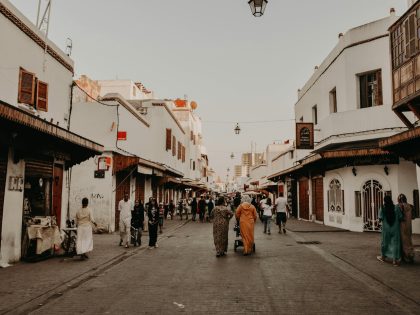Pretoria’s Forgotten Hip-Hop Scene
In 2010, documentary filmmaker Sara Chitambo packed up five years’ worth of life in Cape Town and relocated to the eGoli, ePitori to be precise. Among her long list of priorities was to immerse herself the Pretoria hip-hop scene which, at its peak, had various artists from the city featuring regularly in the South African hip-hop publication Hype Magazine. She’d been an active participant in Cape Town hip-hop – whether as an avid attender of shows, or through her television career as an entertainment producer/reporter on ETV where she compiled, among other pieces, an insert on Pioneer Unit’s first ever compilation project Planetary Assault.
Arriving in Pretoria, however, Chitambo found a rap scene in limbo. The hype sold through glossy magazine covers manifested its true colors, and they were on the left side of bright. The State Theatre shows that she’d attended on a once-off mission up north while still located in Cape Town had all but died down. There were hardly any musicians making noise on radio and television. Feeling somewhat robbed of a unique experience, Chitambo decided to make The Capacity Of Capcity, a documentary dedicated to tracking the rise, fall, and possible indicators of a hip-hop renaissance in the land of Jacaranda trees.
After a year and some of filming, she lost a hard drive’s worth of footage on a trip to Rwanda. Undefeated, she kick-started another shooting schedule–a solitary, taxing, but fulfilling task. When I met her in 2012, she’d all but given up on the project. It didn’t make sense; after countless interviews with tastemakers (DJ Kenzhero, Nyambz), magazine editors (Mizi Mtshali, Simone Harris), and the actual emcees, vocalists, and producers who helped build the scene (Maliq, Fifi, Thir[13]teen), why stop?
She also had rough drafts and nuggets about how she wanted the story to develop. On a whim, I offered to lend a hand in the editing process, an exercise which not only involved countless hours of learning, but instilled in me a deep appreciation for hyper-local scenes and the importance of documenting what happens within them.
The Capacity of Capcity is one such document – a case study in the intricacies underpinning untold stories; a session for artists to vent, reminisce, or suggest a way forward; and ultimately a labour of love created for no other purpose but to interrogate what a long-standing fan found weird and odd about her newfound home.
*Chitambo agreed to share a chapter from the 40-minute documentary with us. This article is part of Africasacountry’s series on South African Hip-Hop in 2014. You can follow the rest of the series here.



















